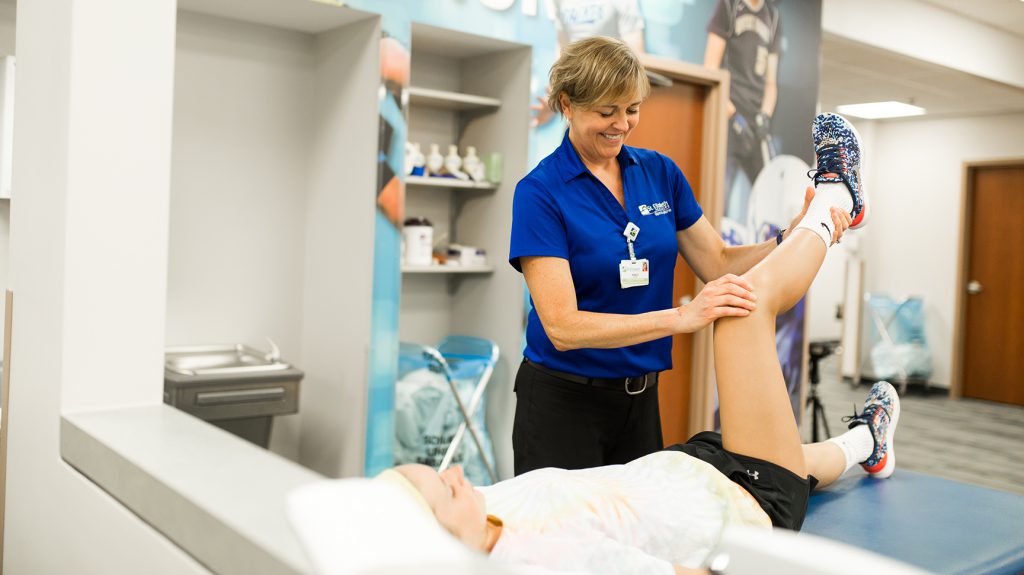As the fall sports season swings into full gear, many athletes are thinking about training and conditioning so they can prevent a season-ending ACL injury. ACL stands for Anterior Cruciate Ligament and it connects your thigh bone and shin bone, running through your knee.
According to the American Academy of Orthopedic Surgeons, football, basketball, soccer and downhill skiers who participate in competitive games have an increased risk for ACL injuries.
The biggest myth for preventing ACL injury is you need to have strong knees Kathy Boehmer PT, MHS, SCS, ATC, Specialty Program Coordinator Sports Medicine, for St. Elizabeth Healthcare, emphasizes core and hip strength. She says, “Hip and core muscles control movement and shock-absorption, so the knee doesn’t take the stress. Research states that the knee is often the victim of poor core stability.”
ACL Injuries Common in Competitive Athletes
Kathy explains most of her patients are between the ages of 15-19 years of age and high school or college athletes, but she has seen ACL injuries in patients from 11 to 66 years old.
She says, “ACL injuries happen in both contact and non-contact sports, but it occurs when stress is placed on your ACL and the tension causes your ligament to stretch or tear.”
The ACL is often put under stress because of a valgus knee position, think of it as “knock-kneed” or your knee angled in toward your other leg. This poor knee position puts your ACL at risk for injury. You are more likely to see this poor knee position (and ACL injuries) in females because they have a wider pelvis and a smaller ACL. The wider pelvis creates a larger angle at the knee, putting more tension on the ACL.
Reducing the Risk of an ACL Injury
There are several improvements Kathy recommends athletes make to reduce the risk of an ACL injury:
- Improve core strength—Having a strong core makes your overall body movement more efficient and allows better body control. A series of core exercises can help with stability and protect your knee from injury.
- Improve hip strength and flexibility—Hip strength, specifically your hip abductor muscles, can affect how you land or push off the floor. Strength in these muscles may decrease the risk of your knee from collapsing into the valgus position. Hip extension is also needed to activate the glutes and hamstrings which will allow for greater hip and knee flexibility during landing which will decrease the stress on the knee.
- Maintain balance in hamstring and quadriceps strength—Balanced strength in your leg muscles is important because your hamstrings and quadriceps work together and provide stabilization of the knee joint when you are in motion and can protect the knee during sports-related tasks.
- Learn proper jumping and landing technique—Muscle strength combined with proper technique, or biomechanics, is called neuromuscular control. When trained properly, neuromuscular control is the most effective factor for reducing the risk of ACL injury.
To learn more about proper techniques and to avoid ACL injuries visit stelizabeth.com/sportsmedicine or call for an appointment at (859) 301-5600.

